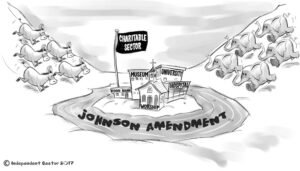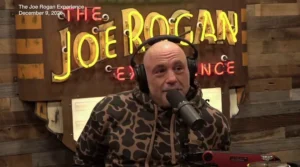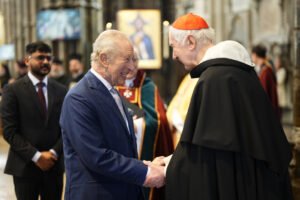Violence Erupts in Seattle: Eight Arrested Amidst Pro-Transgender and Christian Protester Clash

Violence Erupts in Seattle: Eight Arrested Amidst Pro-Transgender and Christian Protester Clash
Introduction to the Protest
The recent protests in Seattle, which witnessed violent confrontations leading to the arrest of eight individuals, have emerged against a backdrop of heightened social tensions surrounding gender identity and religious beliefs. The pro-transgender movement, advocating for the rights and recognition of transgender individuals, has gained significant momentum in recent years, pushing for changes in societal norms, legal protections, and public acceptance. This advocacy stems from a collective effort to address inequities faced by transgender people, who often experience discrimination and violence based on their gender identity.
On the other side, a concurrent protest led by Christian groups focused on asserting traditional views regarding gender and sexuality. Many of these individuals believe that biological differences dictate gender roles, a perspective that contrasts sharply with the pro-transgender viewpoint. The clash between these two groups in Seattle highlights a broader societal debate, not only about personal identity but also about the intersections of faith, politics, and human rights.
The social and political climate that prompted these demonstrations is indicative of a nation grappling with complex questions about identity, rights, and morality. Legislative debates around transgender issues, including access to healthcare and participation in sports, have amplified the stakes involved. Furthermore, public opinion on these issues has been profoundly polarized, creating a charged environment where dialogues can easily escalate into confrontations. As tensions rose in Seattle, the motivations of both pro-transgender advocates and Christian protesters became central to the unfolding events, revealing deeply held beliefs that drive each group and the urgency felt by each side in advocating for their respective causes.
Details of the Protest
The recent protests in Seattle occurred on October 14, 2023, drawing significant attention both locally and nationally. The discord erupted near the downtown area, where approximately 300 demonstrators gathered, representing two opposing ideologies: supporters advocating for transgender rights and counter-protesters promoting Christian beliefs. The primary location for the event was beneath the iconic Space Needle, which became a symbolic backdrop for the escalating tensions. As the day progressed, the atmosphere was charged with emotions, reflecting the deep-seated convictions held by both sides.
The pro-transgender group displayed an array of colorful signs containing slogans such as “Trans Rights are Human Rights” and “Protect Trans Youth,” emphasizing their commitment to advocating for inclusivity and equality. Many participants wore vibrant clothing and adorned themselves with accessories that celebrated gender diversity, creating a visual representation of their cause. Speeches from key figures in the LGBTQ+ community were delivered, reinforcing the importance of acceptance and supporting marginalized groups.
Conversely, the Christian protesters articulated their beliefs with signs reading “There is Truth in Christ” and “Protect Our Children,” highlighting their stance against gender-affirming treatments. The contrasting messages indicated a profound ideological divide surrounding the issues of gender identity and religious beliefs. Notable speakers from this side articulated their concerns regarding the impact of transgender rights on societal norms and family values.
As emotions escalated, clashes between the two groups resulted in multiple scuffles, prompting law enforcement to intervene and ultimately leading to the arrest of eight individuals. This event not only highlighted the ongoing societal debate surrounding gender identity but also underscored the challenges of maintaining civil discourse in the face of deeply held convictions. Both groups left a significant mark on Seattle’s socio-political landscape that day, prompting further discussions regarding acceptance and understanding in a polarized society.
Inciting Incidents Leading to Violence
The recent violent clashes in Seattle between pro-transgender demonstrators and Christian protesters were preceded by a series of inciting incidents that significantly heightened tensions. It is crucial to understand the dynamics and events that unfolded leading up to the confrontation, providing context for the violence that ultimately erupted. Witness accounts reveal that the protests, initially intended to be peaceful expressions of differing ideologies, quickly became volatile as opposing groups gathered at the designated protest sites.
As the demonstrations commenced, protesters from both sides began to engage in verbal exchanges that escalated in intensity. Eyewitnesses reported that inflammatory rhetoric and provocative actions characterized the interactions. For example, pro-transgender activists waved banners and chanted slogans that directly challenged the beliefs of the Christian protesters. In response, Christian demonstrators employed counter-slogans aimed not only at expressing their views but also at attempting to drown out the opposition.
The atmosphere began to shift from a structured protest to an emotionally charged altercation as individuals from both sides appeared increasingly agitated. Reports indicated that small skirmishes broke out between groups, with instances of pushing and shoving occurring in crowded areas. The presence of counter-protesters intensified the situation, as they sought to assert their dominance in the discourse, further contributing to the flammable situation. As tensions reached a breaking point, actions such as physical confrontations not only drew the attention of law enforcement but also set the stage for the eventual clashes.
Understanding these preceding incidents is essential for comprehending how the conflict escalated to the violent outbreak witnessed later. After a series of provocations, the situation complicates the narrative surrounding both groups, revealing the cyclical nature of tension and conflict when contrasting ideologies confront each other in public spaces.
Overview of the Clashes
The recent protests in Seattle, centered around pro-transgender rights and Christian activist groups, escalated into violent confrontations that culminated in the arrest of eight individuals. The unrest began when demonstrators from both factions gathered in a public park to express their respective beliefs, with pro-transgender activists advocating for inclusive policies and rights, while Christian groups emphasized their commitment to traditional values.
As the protests progressed, tensions heightened when demonstrators from opposing sides began to engage in verbal confrontations. Eyewitness accounts suggest that the atmosphere grew increasingly charged, with both groups exchanging inflammatory remarks that fostered a sense of animosity. The presence of counter-protests amplified the situation, leading to physical skirmishes as activists clashed in their efforts to dominate the narrative. Reports indicate that some individuals resorted to throwing objects, exacerbating an already volatile atmosphere.
As the circumstances unfolded, it became evident that societal divisions over issues of gender identity and religious convictions are manifesting in increasingly aggressive public demonstrations. This incident serves as a reminder of the complexities surrounding free speech and the potential for conflict when deeply held beliefs come into direct opposition. The events of the day were not only a reflection of ideological disparities but also an illustration of the need for dialogue and understanding amidst growing social tensions.
Police Response and Arrests
In response to the clashes that erupted between pro-transgender advocates and Christian protesters in Seattle, law enforcement implemented a range of strategies aimed at maintaining public order and ensuring the safety of all involved. Given the intensity of the confrontations, the Seattle Police Department deployed officers equipped with crowd-control gear to manage the situation effectively. Officers were assigned specific roles to facilitate containment, separation, and de-escalation tactics, prioritizing the protection of demonstrators and bystanders alike.
The authorities utilized a layered approach that included the establishment of a secure perimeter around protest areas. This tactic allowed police to monitor developments as the situation unfolded. Additionally, officers were instructed to use verbal commands to disperse groups when necessary. However, the situation escalated, leading to the decision to make arrests. It was determined that several individuals were actively engaging in behaviors that posed a threat to public safety, which prompted the law enforcement team to intervene decisively.
Following the unrest, a total of eight individuals were arrested, with charges ranging from disorderly conduct to assaulting a police officer. The rationale for these arrests centered on the need to prevent further violence and safeguard public safety, with law enforcement emphasizing that individuals who acted unlawfully were subject to arrest regardless of their affiliation. Each charge reflects the involvement of the arrested participants in the turmoil, highlighting the complexities of large-scale demonstrations and the corresponding challenges faced by police in managing conflicting ideologies.
Moving forward, the Seattle Police Department intends to assess the effectiveness of their response mechanisms in handling such clashes and to implement strategies for future protests to minimize the risk of violence, thereby ensuring a safer environment for all community members.
Reactions from Both Sides
The recent clashes in Seattle between pro-transgender activists and Christian protesters elicited a wide range of reactions from both sides, emphasizing the polarized nature of the discourse surrounding transgender rights and religious freedoms. Leaders and participants from both groups expressed strong sentiments regarding the violence that erupted, reflecting their distinct perspectives on the incident.
Pro-transgender advocates condemned the violence, viewing it as an alarming manifestation of intolerance towards the LGBTQ+ community. Several leaders issued statements emphasizing their commitment to advocating for equality and respect for all individuals, regardless of gender identity. They expressed dismay at the events, asserting that such hostility only underscores the urgent need for continued activism and awareness regarding transgender rights. Many participants from this side called for solidarity amidst the chaos, urging supporters to gather peacefully to promote their cause rather than engage in conflict.
Conversely, representatives from the Christian group expressed concern over the anti-Christian sentiment they perceived in the pro-transgender protests. Some leaders articulated that the clashes reflected a broader societal disdain for religious beliefs, framing their viewpoint as a fight to uphold traditional values. They emphasized the importance of free speech, declaring that their right to voice their opinions should not come at the expense of violence. Participants articulated plans to organize future events aimed at promoting dialogue rather than confrontation, emphasizing the need for mutual respect between differing viewpoints.
This clash has highlighted the growing tensions surrounding the discussion of rights and freedoms in contemporary society. Both groups have called for reflection on their respective missions, urging potential future actions that do not compromise the safety and dignity of individuals involved. It remains to be seen how these organizations will navigate the aftermath of the protests and prioritize their messages moving forward.
Historical Context of Similar Protests
The recent conflicts between pro-transgender activists and Christian protesters in Seattle can be better understood by examining historical precedents that reflect parallel tensions involving LGBTQ+ rights and religious beliefs. Over the past few decades, societal attitudes toward LGBTQ+ issues have undergone significant transformation, with milestones such as the legalization of same-sex marriage in numerous countries highlighting this shift. However, this progress has not come without backlash, often manifesting in protests that stem from deeply entrenched societal beliefs and religious doctrines.
Historically, protests concerning LGBTQ+ rights have intensified during periods of legislative change. For instance, during the late 20th century, the AIDS crisis spurred significant activism, leading to both pro- and anti-LGBTQ+ demonstrations. Events like the Stonewall Riots in 1969 marked a turning point, catalyzing the modern LGBTQ+ rights movement. Conversely, religious groups often mobilized in response to perceived threats against traditional values, notably during debates surrounding the Defense of Marriage Act in the 1990s. These protest movements shared commonalities in their passionate rhetoric and public mobilization, underscoring the contentious nature of the discussions surrounding gender and sexuality.
While there are striking similarities in protest dynamics, it is also important to recognize the evolution of these movements. Contemporary protests, such as those in Seattle, often feature a diverse coalition of voices advocating for inclusivity and equality, contrasting with earlier movements dominated by specific narratives. Moreover, the rise of social media and digital activism has transformed how these groups organize and spread their messages. This evolution reflects a broader societal shift towards acceptance, albeit with ongoing resistance from established religious groups. Ultimately, understanding these historical contexts provides valuable insight into the persistent struggle for LGBTQ+ rights and the complex interactions with religious perspectives in various communities.
Media Coverage and Public Perception
The recent protests in Seattle, which featured clashes between pro-transgender advocates and Christian protestors, have garnered significant attention from various media outlets. Each outlet has approached the coverage of these events with differing narratives, reflecting distinct biases which can shape public perception. Some media reports have framed the clashes as a confrontation of rights, emphasizing the need to protect marginalized communities, while others have depicted the events as a clash of ideologies, focusing on the perspective of religious freedom. This divergence in portrayal highlights the complexities surrounding social issues and the polarized views that often emerge within public discourse.
Additionally, the role of social media has played a pivotal part in influencing public sentiment. Platforms like Twitter, Facebook, and Instagram have allowed individuals to share their own perspectives, leading to an influx of opinions on the unfolding situation. Many users have expressed strong support for the pro-transgender demonstrators, viewing the protest as a necessary stand against what they perceive as intolerance. Conversely, others have rallied in defense of the Christian protestors, framing their actions as a declaration of faith and advocacy for traditional values. This dichotomy in social media narratives contributes to a wider cultural divide regarding issues of gender identity and expression.
Conclusion and Future Implications
The recent clashes between pro-transgender activists and Christian demonstrators in Seattle underscore the ongoing struggles surrounding LGBTQ+ rights, particularly as society grapples with varying ideological beliefs. These events not only highlight the divisions that exist within communities but also raise critical questions about the future of public discourse on such sensitive topics. The implications of these protests extend beyond the immediate confrontations, reflecting a larger narrative about acceptance, tolerance, and the rights of individuals to express their identities without fear of retribution.
As tensions between different groups continue to escalate, it is essential to consider the potential outcomes for future protests. The events that transpired in Seattle may serve as a catalyst for more organized efforts among advocacy groups and religious organizations to voice their respective positions. Increased polarization could lead to heightened activism on both sides, prompting a reevaluation of strategies for communication and engagement. Additionally, these demonstrations may result in a reexamination of local and national policies regarding public gatherings and freedom of expression, ultimately impacting how such events are managed in the future.
Moreover, societal attitudes towards LGBTQ+ rights may evolve in response to these confrontations. Public opinion can shift either towards greater acceptance or increased resistance, influenced by media coverage and community conversations following incidents like the one in Seattle. The role of law enforcement will also come into focus; police departments must balance maintaining public order with respecting individuals’ rights to protest. Their methodologies will likely be scrutinized, particularly in terms of their effectiveness in de-escalating conflicts without compromising the integrity of demonstrators’ rights.
In conclusion, the Seattle protests signify not only the immediate clash of ideologies but also the broader implications for social discourse on LGBTQ+ rights and religious beliefs. As these conversations continue to unfold, the necessity for tolerance and mutual understanding remains paramount in addressing the complex dynamics of contemporary society.











Leave a Reply
You must be logged in to post a comment.